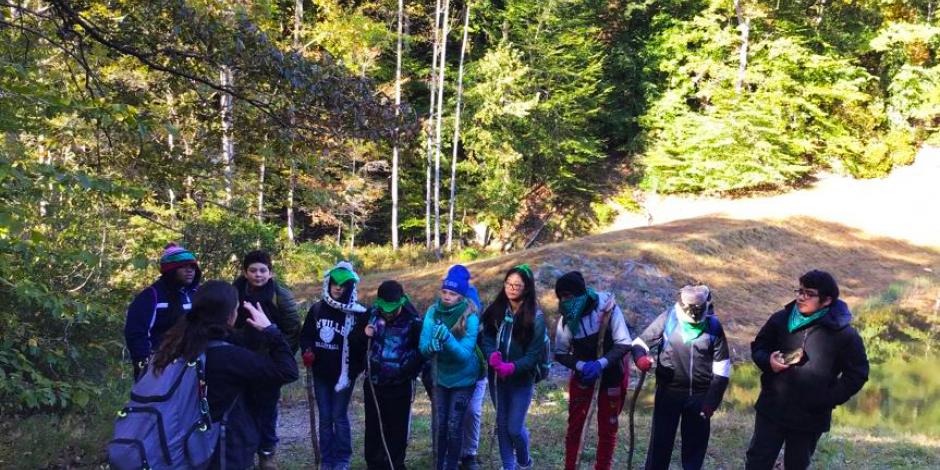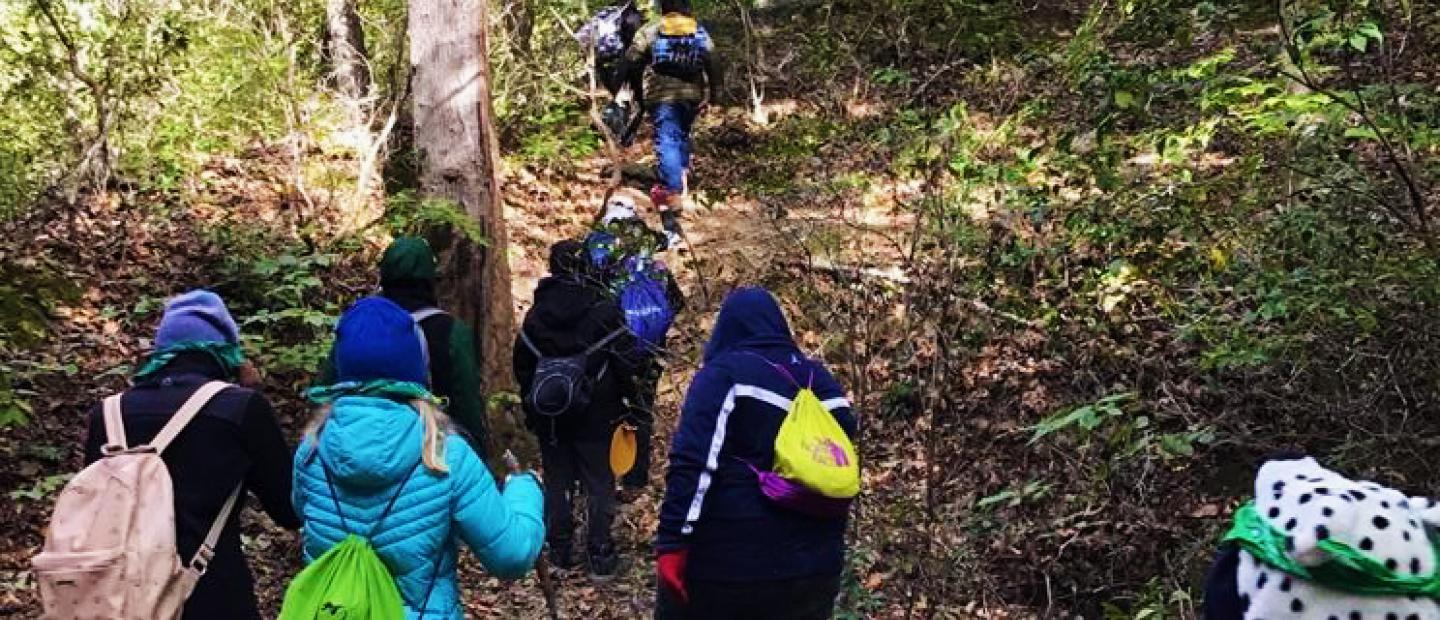Stewardship Hike Walk-and-Talk

Prince William Forest Park (PRWI) has so much to offer the students who visit it, particularly in terms of natural features for exploring and the park’s close connection to the Chesapeake Bay Watershed. During the trail days with students, it is not unusual for us to spend a good part of the day hiking.
While many students love to explore while they hike and have no problem walking for a while, other students need a little more structure as well as some time to rest. During the long trail days, I like to space out the hiking with games, activities and paired hikes or walk-and-talks. One activity I like to do with my students is a walk-and-talk paired hike (inspired by an activity I observed by a fellow educator, Rachel Figgs) where we talk about how we can be better stewards to ourselves, our neighbors and our environment.
Before we start, we discuss what a steward is and what it means to be a “good” steward in our communities. I then ask the students to form two lines facing me, they pair off and discuss prompts I give them as we continue walking together down the trails. Every so often we will stop so I can give them a new prompt and during this time I have the students change partners as well, having one student do a dance or silly walk down the center of the two lines to the end of one of the rows and we continue walking. I generally ask the same questions every time I do this activity…
If you could have any job in the world and it would pay you any amount of money, what would you want your job to be?
How could nature help you in that job?
How could your job help nature?
What is your favorite part of nature?

When students from Beville Middle School in Woodbridge, VA, came to the NatureBridge PRWI campus I decided I would do this activity as we had some long hikes planned ahead of us. On the way to a lake site behind Camp 4 in PRWI, the students got into pairs and discussed the prompts provided. Once we got to the lake (and after a brief reminder of boundaries in this location) we circled-up and debriefed the activity.
I asked the first question again, If you could have any job in the world and it would pay you any amount of money, what would you want your job to be? One student raised their hand; “a rapper,” another raised their hand; “a herpetologist,” another; “soccer player,” another; “fashion designer.”
I asked them in what ways nature would help them in their jobs; “It would give me air to breathe,” “It would give me a subject to study,” “I guess I could use nature as something to write about or write about helping it,” and “It could provide me with materials to make things.”
Then I asked how they would be able to help nature with their jobs; “I’m not sure,” “I could donate to places like NatureBridge after I become rich and famous,” “I would be able to help animals,” and “I don’t think I could.” We then furthered the discussion by talking about our favorite parts of nature (“beauty,” “animals,” “clean air” and “water”) and what we do in our day-to-day lives that help us to protect, preserve or conserve that nature that meant so much to us.
We had a chance to look at our future selves, who are living our dream lives with unlimited amounts of money, but what can we do today to help the natural world around us?Educator Kathyrn Braddock
This usually leads to a discussion about the health of the PRWI forest, the Chesapeake Bay Watershed, how to recycle and pollute less, how to use less energy and how we can help teach our families and friends to do the same. I really enjoy this activity and find it very effective for having conversations about stewardship and the environment with students. It allows the group to have fun and use their imaginations while making connections to their actions and discussing with their peers how they can be better not only to the environment for themselves, but for everything else that uses natural resources to survive. It is also a way for students to get to know individuals in the group they may not have talked to before and gives us some common ground to work off of for the rest of the day.

